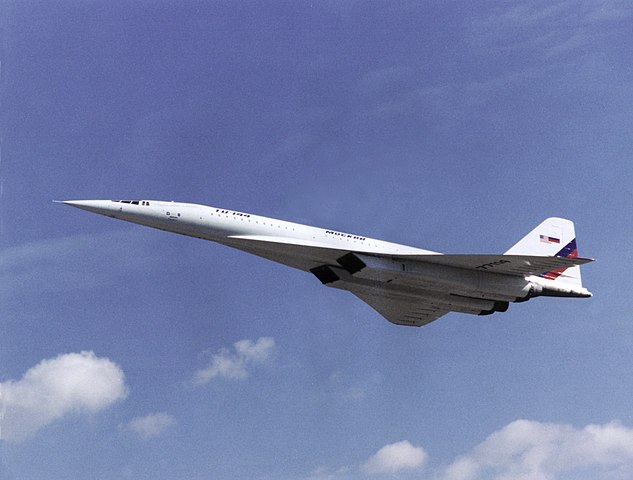[ad_1]
The Concorde may have been a game-changing jet when it entered service in 1976, but a rival Russian jet—the Tupolev Tu-144—happened to be in the air one year earlier.
The earlier service, however, was a detriment to the ambitious aircraft, as the Tupolev wasn’t as refined overall as its Western European competitor. Thus, its history was a little more uneventful.
The Birth of the Soviets’ ‘Konkordski’
While England and France collaborated on developing the Concorde, Russia wanted to not only have an answer but also beat it to the market. With the help of aerospace company Tupolev, Russia built the Tu-144, nicknamed the ‘Konkordski.’
Development of the supersonic jet began in 1963, with the plan being to build four prototypes by 1966. The Tu-144 took its maiden flight on 31 December 1968, which predated the Concorde’s first flight by a couple of months.
The Tu-144 was a very impressive jet at the time of its development. The Russian jet exceeded the Concorde in top speed at 1,518 miles per hour (2,443 kilometers per hour), Mach 2.35. However, the Tu-144 was much less efficient.

Mainly, the Tu-144 was almost 50,000 pounds heavier than the Concorde, which made control and maneuvering more difficult. Although the Concorde was more technologically advanced, the braking and aerodynamics of the Tu-144 were not known to measure up even closely.
The 1973 Paris Air Show Tragedy
Tragedy struck at the Paris Air Show when a Tupolev Tu-144 crashed and killed 14 people during an exhibition flight on 3 June 1973. According to eyewitness reports, the crew tried to demonstrate the jet’s acceleration by flying at a low altitude. The aircraft, however, couldn’t endure the stress and began to disintegrate in midair. Tu-144 parts rained on the village below, causing scenes of chaos and destruction.
The Tu-144 crashed in a nearby village, killing all six crew members and eight villagers, including three children. The accident also injured 60 additional people on the ground. Many consider the 1973 crash the moment the jet’s fate was sealed.
Nonetheless, Russia continued its plans to fly the jet commercially, even flying again at the Paris Air Show in later years. In 1975, the Tu-144 began flying mail and cargo between Moscow, Russia, and Alma-Ata, Kazakhstan. Passenger flights were permitted starting in 1977.
Passengers aboard these flights quickly had an unpleasant experience. The interior was very noisy, to the point that colleagues and family members had to exchange written notes to have conversations on flights. The noise was due to the engines and the air conditioners that kept the cabin from overheating.

The Tupolev Tu-144 Program Comes to an End
Aeroflot had a five-year deal with Tupolev in 1976, but it called it quits on the Tu-144 in 1978 when it crashed again while being delivered to Russia’s flag carrier. The airline only managed 102 flights with the supersonic jet, with just over half the flights carrying passengers.
Tupolev ceased production of the Tu-144 in 1982. The jet was then used by the Soviet program to train space pilots and NASA for supersonic research. The last flight of the Tu-144 occurred on 26 June 1999 as part of NASA’s High-Speed Civil Transport program.
As of this writing, only seven out of 17 Tu-144s are still in one piece. Six of them are on display or in storage in Russia, while one is on the Auto & Technik Museum’s rooftop in Sinsheim, Germany. Of the ten other units, two were destroyed in the accidents mentioned above, six were scrapped, and the other two’s whereabouts are unknown.
[ad_2]
Source link


